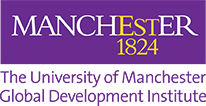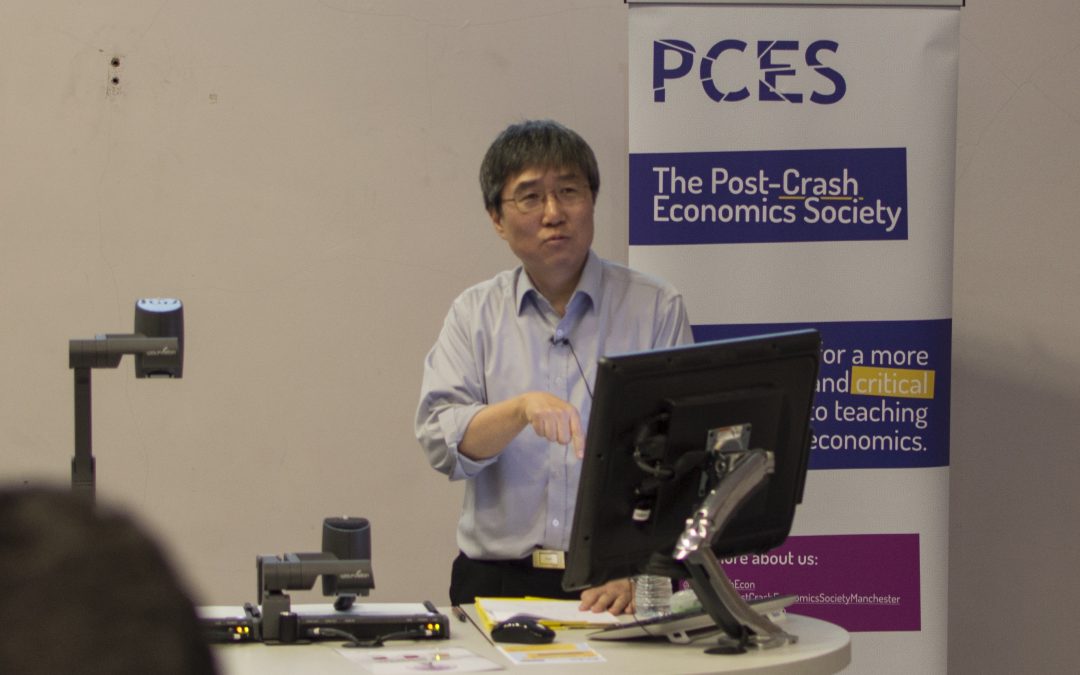
GDI Lecture Series: Are some countries destined for under-development with Ha-Joon Chang
On Monday 6 February, Ha-Joon Chang gave a lecture entitled ‘Are some countries destined for under-development?’ You can listen to the podcast, or watch the lecture below.
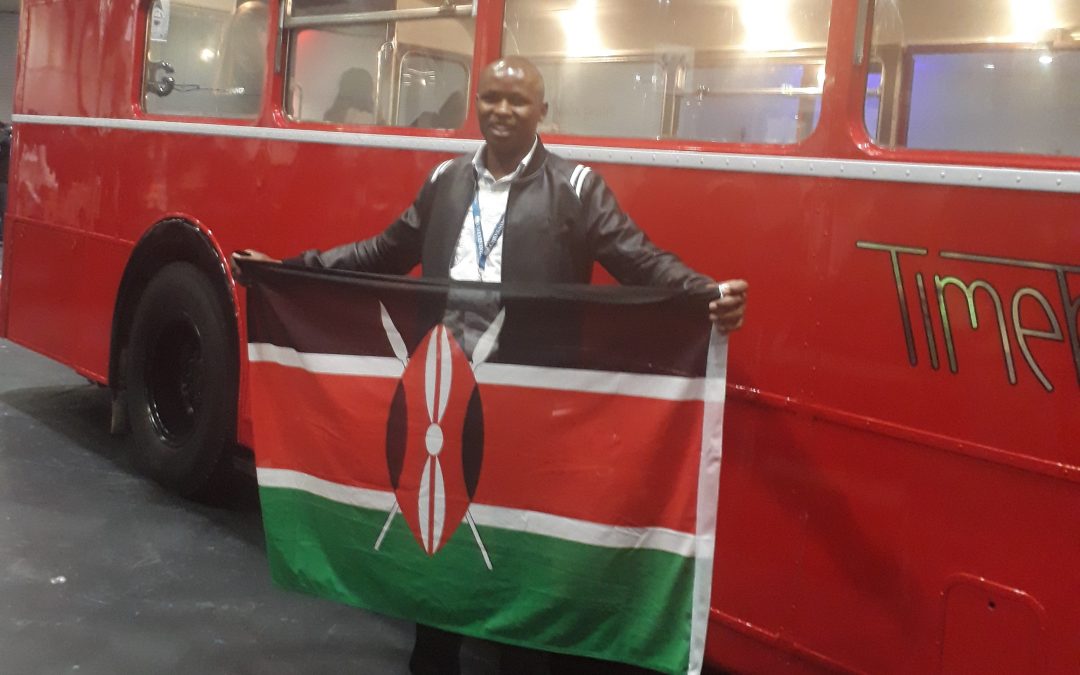
An Exciting Start!
My name is John Mukabi and am from Kenya. It’s exactly now two months since I came to Manchester. When I first landed in the UK it was a dream come true! Since childhood, I had ambitions to study abroad and when I graduated with my first degree five years ago the ambition to study abroad grew bigger. I was working with the parliament of Kenya in the last five years and I got more inspiration for world-class education from high-level working officials in the government and parliamentarians all of whom got this type of education. I started exploring universities abroad and the courses they offered and every time I could fall for UK universities all of which were top ranking in world universities ranking. The one year master’s program makes them more appealing! Who doesn’t want to get a master’s degree in one year? Having worked with parliament my career interests were becoming re-aligned to the field of governance and policy. The University of Manchester is one of the UK universities that offers the best courses in this field. My aspiration to join this university was also driven by my fanatical support for the great Manchester United and Manchester City top football clubs in the premier league! Applying to be enrolled to the university is through an online process that is very efficient and straightforward and soon I had an offer to study a postgraduate degree in International Development: Politics, Governance and Development Policy. My dream to study here came true through securing a scholarship from the British government through the FCO office. read more…
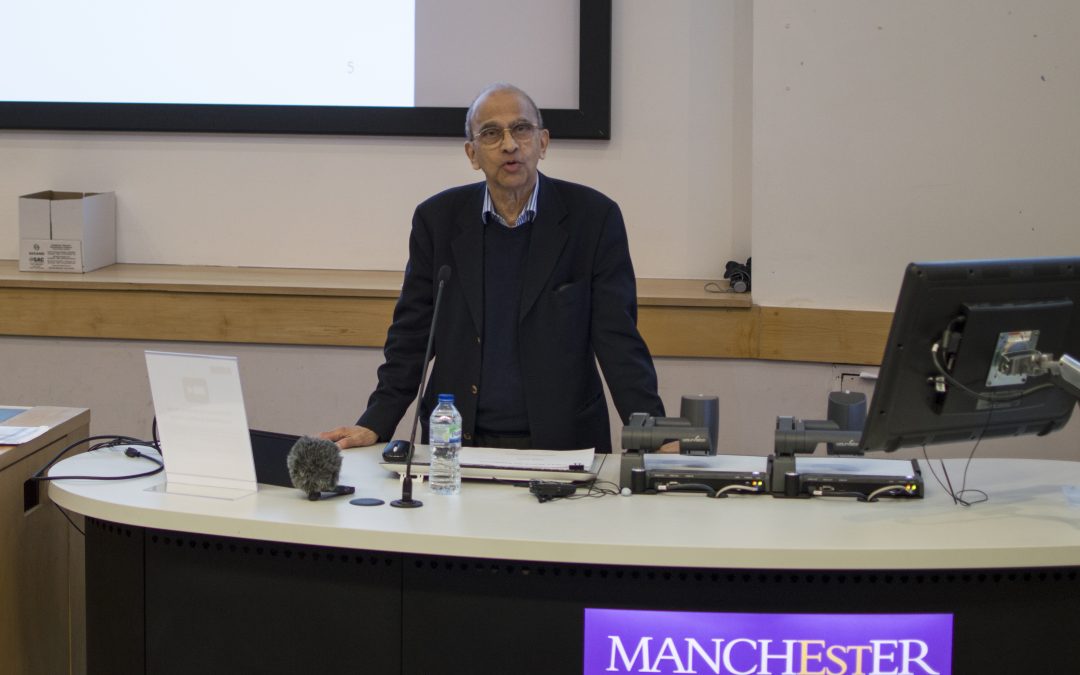
GDI Lecture Series: India: the Long Road to Prosperity with Vijay Joshi
On Wednesday, 31 January, Vijay Joshi gave a lecture entitled ‘India: the Long Road to Prosperity’. You can listen to the podcast below.
You can also find this podcast and other episodes on:
Note: This article gives the views of the author/academic featured and does not represent the views of the Global Development Institute as a whole.
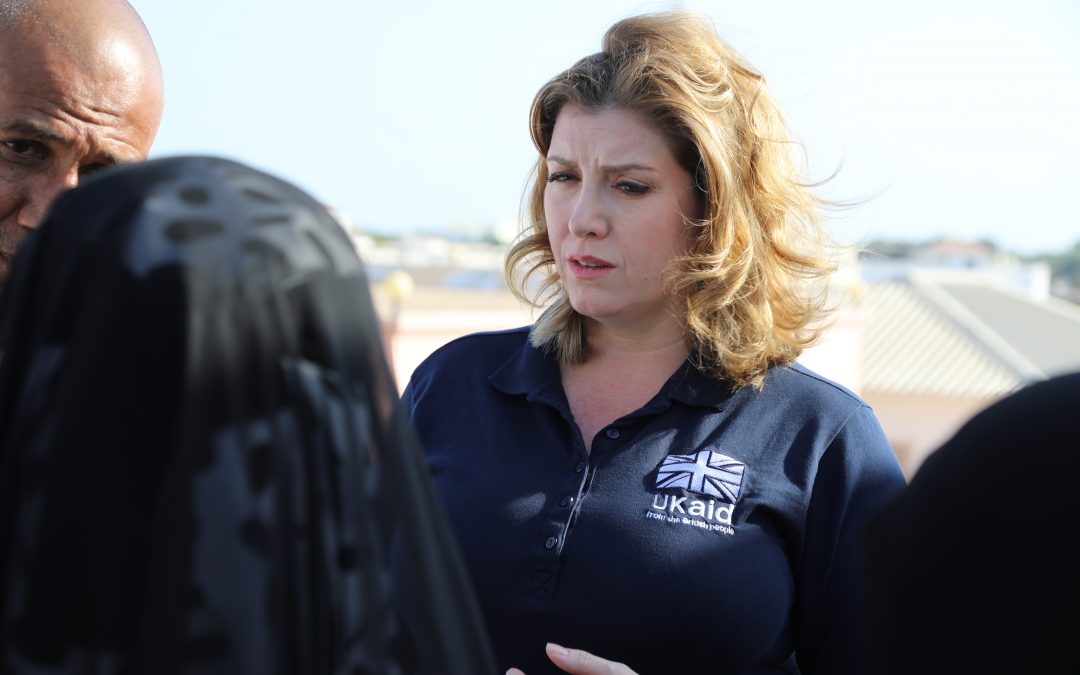
Gesture politics and foreign aid: evidence vs spin
Pablo Yanguas, University of Manchester
Secretary of State for International Development Penny Mordaunt has warned recipient governments that they face cuts in UK aid if they don’t “put their hands in their pockets”. Her warning is grounded on a claim of public concern: “Nagging doubts persist for many people, about what we are doing, why we are doing it … especially when there are domestic needs and a national debt to address.” It is a compelling point but, as it turns out, one for which there is actually very little evidence.
The most recent YouGov/Times survey poll asked Britons what issues they considered most important among those facing the country: Brexit, health and the economy topped the list. The potential misuse of foreign aid funds, as one would expect, did not even register. read more…

How anti-globalisation switched from a left to a right-wing issue – and where it will go next
Rory Horner, University of Manchester; Daniel Haberly, University of Sussex; Seth Schindler, University of Sheffield, and Yuko Aoyama, Clark University
The world is currently witnessing a new backlash against economic globalisation. Supporters of the UK’s exit from the European Union seek to “take back control” from Brussels, while Donald Trump’s economic ethno-nationalism has promised to put “America first”.
Trump arrives at the 2018 World Economic Forum in Davos after his administration claimed that US support for China joining the World Trade Organisation (WTO) in 2001 was a mistake and having just announced large tariffs on imported solar panels. It is remarkable that the backlash that he represents emerged from the right of the political spectrum, in countries long recognised as the chief architects and beneficiaries of economic globalisation. read more…

DSA2018: Call for early career plenary speaker on “global inequalities”
The Development Studies Association conference will include an early career researcher plenary speaker session (within 5 years of finishing PhD). The session aims to showcase emerging talent and showcase their thoughts on how research agendas in specific fields of development theory and practice can be moved forward. We are seeking early career researchers who can speak to how their research relates to, and pushes forward, the conference theme of “Global Inequalities”.
A full concept note for the conference theme is available here. Briefly, focusing on global inequalities challenges the traditional geographies of development, and demands investigation of the power relations that generate wealth and poverty within and between countries and regions. It also emphasises the many dimensions of inequality, including gender, class, climate, race and ethnicity, region, nationality, citizenship status, age, (dis)ability, sexuality, and religion and the ways these reinforce or counteract each other. read more…
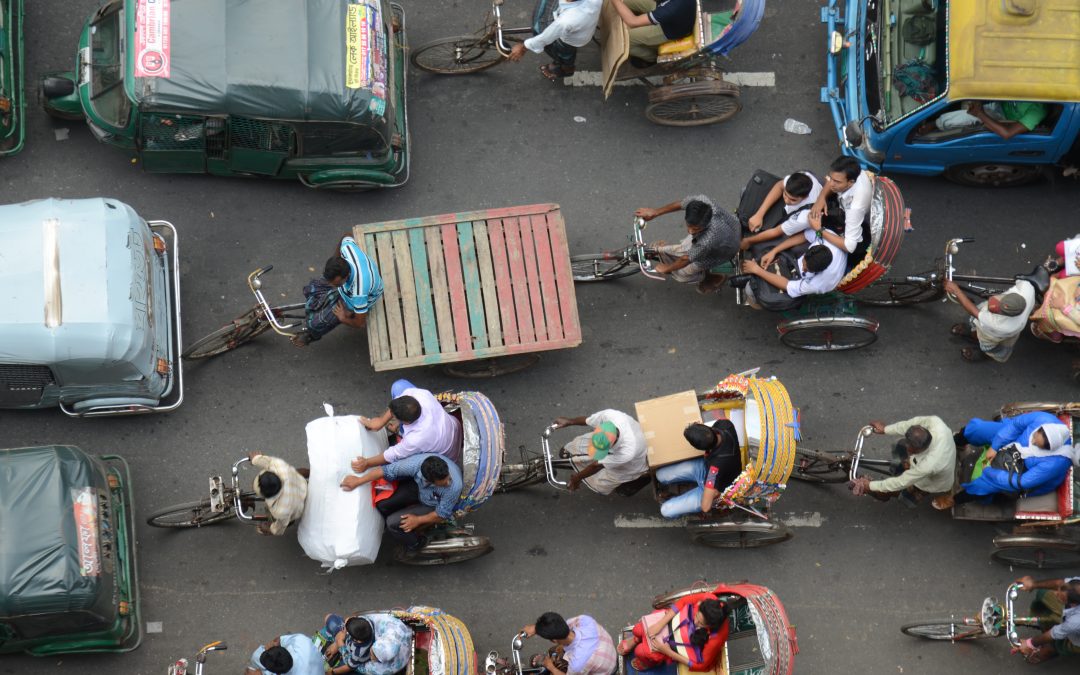
Poverty measurement using data from the Hrishipara daily financial diaries
The ‘Hrishipara daily financial diary’ research project has been collecting data from 60 low-income respondents living near a market town in central Bangladesh since May 2015, and is ongoing. Field staff visit our ‘diarists’ daily1 to record the money that flowed into and out of their hands that day, noting the value and purpose of each transaction. These data allow us to measure poverty in various ways and in this paper we discuss the results of five different measurements. read more…
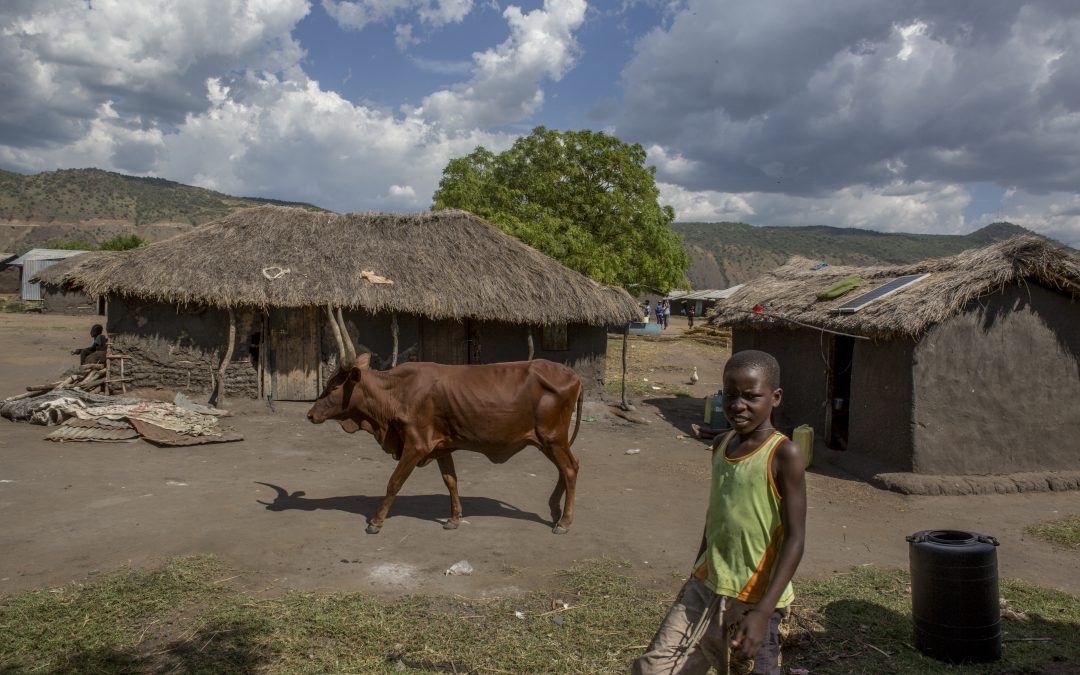
Call for papers: What Works for Africa’s Poorest Children?
Social policies and programmes for children living in extreme deprivation:
10-12 September 2018, Kampala, Uganda
While there has been substantial progress in reducing global poverty in recent years, hundreds of millions of vulnerable children remain trapped in extreme poverty. This is especially the case on the African continent, where children account for the majority and growing proportion of the population. Despite rapid economic growth in several African countries, as well as significant achievements in both development and humanitarian interventions, a staggering number of African children remain vulnerable to extreme levels of deprivation.
Existing challenges notwithstanding, a number of carefully crafted and effectively implemented social policies and programmes proved successful in alleviating the burden of child poverty and deprivation. In addition to being vitally important in promoting and protecting children’s rights, these social policies and programmes embody the international community’s commitment to achieve the Social Development Goals (SDGs) and ensuring no one is left behind.
This conference aims to contribute to global efforts to end child poverty by generating key insight on practical actions, programmes and social policy interventions that have made a tangible difference in the lives of Africa’s poorest children. read more…
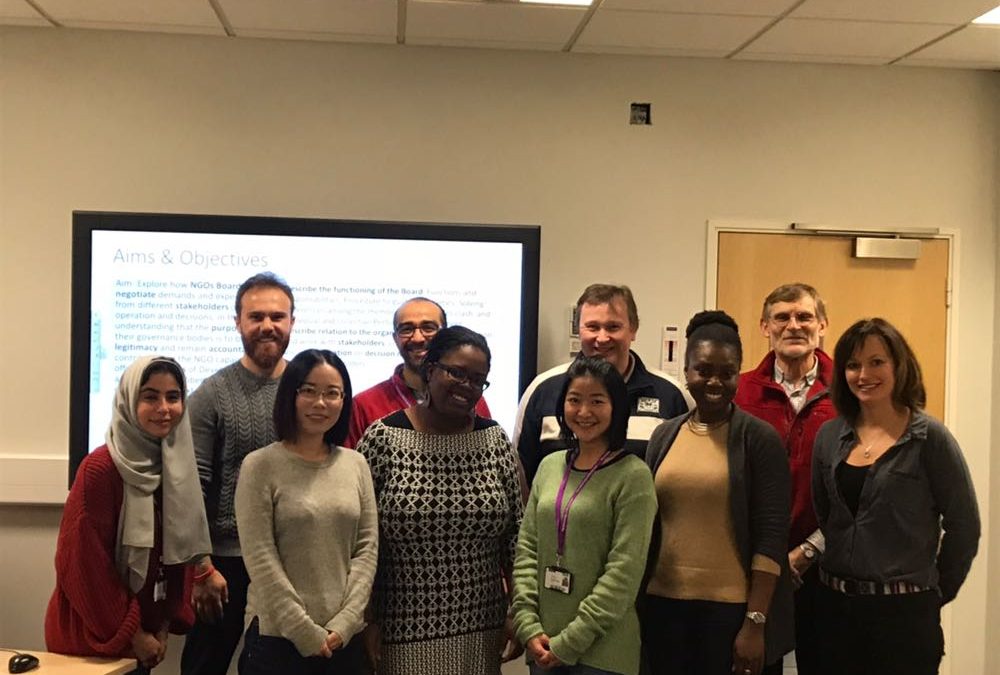
Developing our Research Environment
Paul Barry, Cluster Convenor: Management and Governance in Development
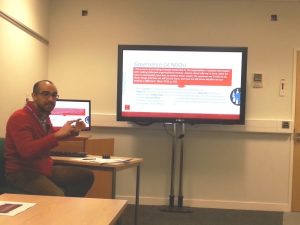 On Monday 18th December, seven first year PhD students from the Brooks Doctoral College met with a group of Global Development Institute academics to discuss informally how their PhD research is progressing. The PhD students, all studying Management and Governance in Development, represent a diverse range of countries, that is, Chile, Ghana, China, Saudi Arabia, Turkey, UK and Thailand. This diversity is also apparent in the research foci underpinning their PhD proposal which research topics including public sector provision for disadvantaged groups, the management of NGOs, and leadership issues in private sector organisations. read more…
On Monday 18th December, seven first year PhD students from the Brooks Doctoral College met with a group of Global Development Institute academics to discuss informally how their PhD research is progressing. The PhD students, all studying Management and Governance in Development, represent a diverse range of countries, that is, Chile, Ghana, China, Saudi Arabia, Turkey, UK and Thailand. This diversity is also apparent in the research foci underpinning their PhD proposal which research topics including public sector provision for disadvantaged groups, the management of NGOs, and leadership issues in private sector organisations. read more…

Using Board Games to Enhance Teaching in Higher Education
Dr Kate Rowlands, Global Development Institute
Creative approaches to teaching and learning are increasingly being used throughout Higher Education and beyond. Earlier this month I chaired the latest SEED “Teaching Matters” session, which provides lectures with a chance to gain new insights and share experiences.
In a highly interactive workshop, Dr Chrissi Nerantzi from the Centre for Excellence in Learning and Teaching, Manchester Metropolitan University helped us to explore the use of board games to enhance learning and teaching activities.
